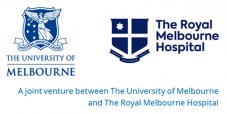The WHO Regional Reference Laboratory for Hepatitis B was designated by WHO in 2010. Professor Stephen Locarnini is the Director. The reference laboratory consists of the Hepatitis Diagnostic Laboratory, Hepatitis Serology Laboratory and the Hepatitis Virus Characterisation Laboratory. The aim of the Reference Laboratory is to provide comprehensive diagnostic services for Hepatitis A, B, C, D and E viruses and also provide diagnostic support for the Western Pacific Region of the WHO (WPRO). The Regional Reference Laboratory’s work is not contained to diagnostic work; laboratory staff also undertake a wide range of research projects including investigations into unusual genotype patterns for the hepatitis virus, and investigations into unusual banding interpretation charts.
Molecular Research and Development
The Research and Development laboratory's major activities involve the molecular characterization of hepatitis B virus (HBV) and hepatitis C virus (HCV). The laboratory is primarily concerned with clinical research aimed at improving outcomes for patients with chronic hepatitis B and C but is also involved in basic research, clinical trial support and molecular epidemiological studies. The main areas of research include: Evaluation of new antiviral drugs for HBV and HCV infection; Study of HIV and HBV co-infection and HIV and HCV co-infection; Studies of antiviral drug resistance; and Evaluation of new molecular technologies.
Serology
The laboratory performs confirmatory and specialised serological testing for hepatitis A, B, C, D, and E infection. Confirmatory testing for HBsAg is carried out by antibody neutralisation. This procedure is needed to exclude the possibility of false positive reactions in surface antigen screening assays. The laboratory performs quantitative testing for HBV DNA. Although there is presently no accepted gold standard confirmatory test for HCV antibody, at VIDRL all specimens reactive in the EIA screening test are re-tested in a second assay, chosen to minimise non-specific cross reactivity. The Reference Laboratory is the only laboratory in Victoria that performs testing for hepatitis D (delta) and hepatitis E infections.
East Timor – confirmatory testing for Hepatitis B using dried blood spots
As a World Health Organization (WHO) Collaborating Centre for Viral Hepatitis Suellen’s group is involved in the development and evaluation of a laboratory method for hepatitis B virus confirmation using dried blood spot filter paper testing as an alternative method to venous blood collection. This method is to be used in a study in the Western Pacific region in collaboration with the Australasian Society for HIV Medicine (ASHM).
Hepatitis Virus Characterisation
HCV RNA Qualitative assay
Hepatitis C virus (HCV) RNA is detected using the COBAS® AmpliPrep/COBAS® TaqMan® HCV Qualitative Test, v2.0. It is indicated for patients who have clinical and/or biochemical evidence of liver disease and are HCV antibody positive. Detection of HCV RNA indicates that the virus is replicating and therefore is evidence of active infection. Low limit of detection (LoD) = 15 IU/mL.
Quantification of HCV RNA is performed using the Abbott RealTime HCV assay. Specimens containing HCV genotypes 1 – 6 have been validated for quantitation in the assay. The Abbott RealTime HCV assay is used in the management of HCV-infected patients undergoing antiviral therapy. The assay measures HCV RNA levels at baseline and during treatment and can be utilized to predict sustained and non-sustained virological response to HCV therapy.
HCV Genotype Assay
HCV is an RNA virus with considerable heterogeneity. Using sequence analysis and phylogenetics, HCV can be classified into sets of distinct genotypes that, in some instances, can be further divided into subtypes.
The Abbott RealTime HCV Genotype II kit is designed for use in the transcription and amplification of the 5’UTR or NS5B regions of the hepatitis C virus (HCV) genome. RealTime-PCR amplification is conducted in three separate reaction mixtures with different fluorophores where genotype specific probes are used to detect HCV genotypes 1, 1a, 1b, 2, 3, 4, 5 and 6. Not all HCV RNA positive samples can be readily genotyped by this assay and the lab also employs the Siemens Versant HCV Genotype 2.0 assay (LiPA) to discriminate or confirm results used in the primary Abbott assay.
Determination of HCV genotype is a clinically useful tool as it is a major predictor of treatment outcome. Those patients with genotype 1 or 4 need 12 months treatment for optimal response whereas those with genotypes 2 or 3 can achieve the best result after only 6 months treatment. Due to the large throughput of genotyping data in our laboratory, we have created a database of results from samples. By sequencing in the HCV core region after PCR amplification, we have been able to establish the true genotype status of these samples. This page describes the unusual banding pattern data.
HCV quantification (viral load) test
This test measures the amount of virus present in the blood and is also a useful predictor of response to therapy. A correlation has been established with pre-treatment levels of virus and response to treatment, with those patients with lower pre-treatment levels having a more favourable response. More recently, it has been shown that viral load testing at week 12 of therapy can also help in predicting the patient’s longer-term response to therapy. Patients without a drop in viral load of greater than 2 logs from screening to week 12 most likely will not achieve a sustained response and therapy should be interrupted. The test used is the Bayer HCV 3.0 bDNA assay, which has a dynamic range of 3,200 – 40,000,000 copies/mL or 615 – 7,692,310 IU/mL.
Epidemiological Serosurveys
Centre staff undertake sero-epidemiological studies, which include the development of novel approaches to laboratory-based serosurveys. Staff are often invited or contracted to undertake serosurveys for a wide range of international health organization, WHO, and governments in the Western Pacific Region.

